
Body Balm: Shea's So Fine
- Out Of Stock




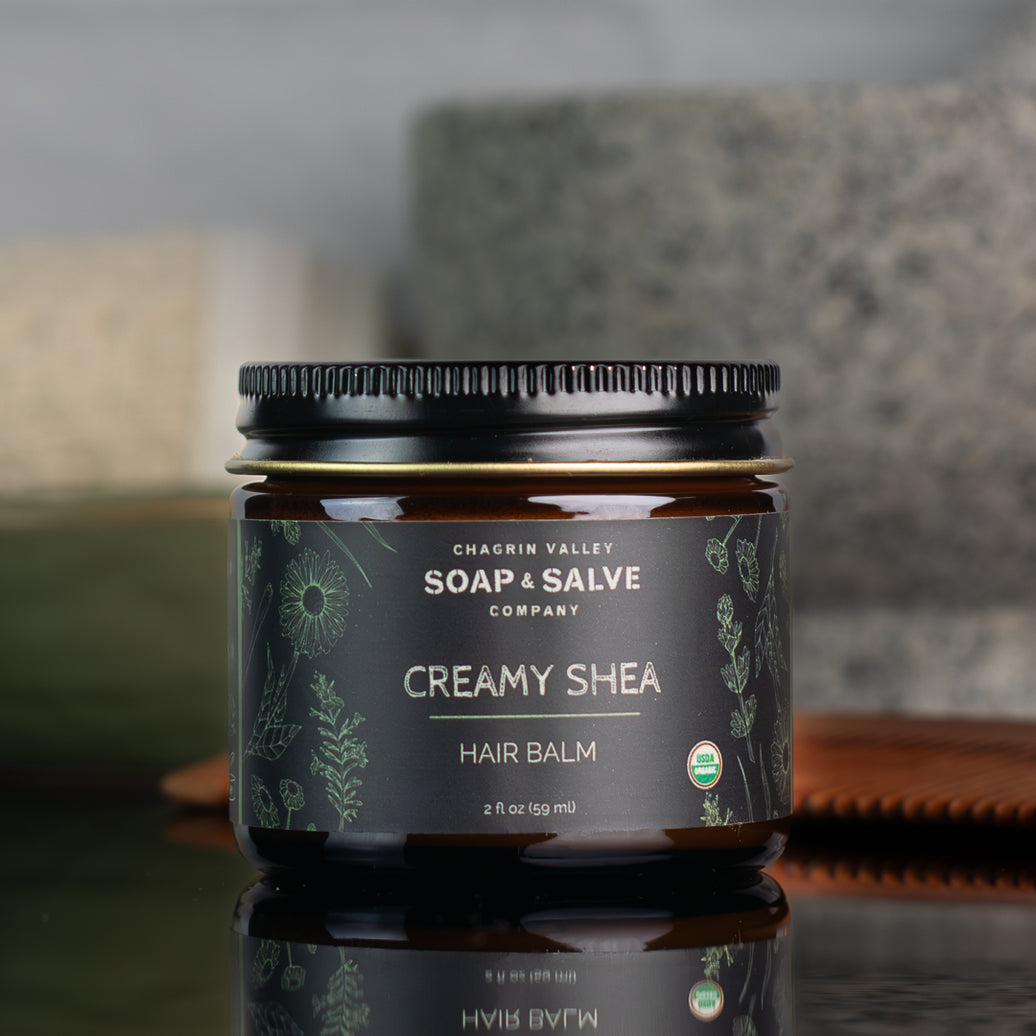
An organic hair balm made with virgin shea butter, great for dry, coarse, or coily hair, it can help revitalize damaged, dull and or over processed hair.






Good For: Coarsely Textured Hair, Tightly Coiled Curly Hair, Dry and Over-processed Hair
Hair butter balms are very versatile products that can be used as pre-wash conditioners, in-shower conditioners, intense conditioners, and leave-in conditioners.
Creamy Shea, our richest hair balm, conditions and moisturizes:
Thicker in consistency than hair oil, a natural plant-based hair butter is an excellent product for styling, freshening a hair style, or repairing damaged hair.
Virgin Shea Butter provides deep nourishment for the hair shaft, lessens frizz, reduces dryness, and can help prevent ends from splitting and weak hair from breaking.
Rich in antioxidants, minerals, and vitamins, it can help moisturize and revitalize damaged, dull and over-processed hair resulting in improved luster and manageability. Shea butter also helps ease irritated scalp conditions.
Shea butter is great conditioning and styling ingredients for people with medium-to-coarse hair that is prone to frizz and dryness. If tightly coiled curly hair is your natural hair type, a shea butter cream is the perfect addition to your hair care routine. Read our Shea Butter Tutorial
Babassu oil nourishes, moisturizes, and restores hair strength, giving you shiny, healthy-looking hair. It can add volume to dry, flat hair without weighing it down. Since it is absorbed quickly it does not leave a greasy film. Babassu is a great smoothing agent to deter flyaways.
Since the structure of Jojoba Oil closely resembles that of our own natural scalp oils, it is considered nature's most effective natural moisturizer. It improves the health of the scalp and hair, provides shine, promotes hair growth, and helps dry and weak hair that is prone to breakage and split ends. It is a great oil for dry, flaky scalp and irritated scalp conditions.
The most important thing about using a hair balm is to make sure it is distributed evenly. Sectioning your hair into layers, a top and bottom layer, can make distribution easier. The thicker or coarser your hair the more layers you may need.
To allow better absorption and maximize its hydrating effects, use hair butter on damp or moist hair.
When applying a hair butter, focus on areas that need extra TLC like the hair ends since they are far from the scalp and lack natural oils.
Use it as a pre-shampoo, deep conditioning treatment once or twice a week depending on your hair type. Your hair will become softer and easier to manage.
Tip: Any time you are leaving the butter balm on your hair, cover your hair with a shower cap. A shower cap keeps your head warm, preventing the butter drying out on your hair strands.
Method 1: After a shampoo and rinse, squeeze excess water out of your hair. Then apply the balm directly to your damp hair using the basic method above and let it sit for 10 minutes while you complete the rest of your shower. Rinse and towel dry.
Method 2 for a lighter weight application: After a shampoo and rinse, squeeze excess water out of your hair.
Use as a leave in conditioner after shampooing to help prevent split ends, calm frizz and flyaways and add a healthy shine. Place a small amount of balm in the palm of your hand, rub palms together and scrunch into damp hair ends or smooth from mid-length to the hair ends. Comb thoroughly to evenly distribute the butter. Do not wash. Style as usual.
Use as a pomade butter to touch up problem spots. Rub a tiny bit of hair butter in your palms, apply to clean, dry hair to smooth down coarse or wiry flyaway hair strands, giving hair a healthy sheen.
For most people it is recommended to avoid applying oils or butters to the scalp. So when using a hair butter begin at least about three inches from the scalp and work all the way to the ends.
Whether or not to oil your scalp seems to be up for debate. While many articles encourage applying oil directly to your scalp, others state that applying oil directly on your scalp may put you at higher risk for dandruff. But some people with dry hair also have a dry scalp. If you typically oil your scalp without any problems then continue to do what your hair and scalp like.
For Dry Scalp: Using your fingertips gently massage a small amount of hair balm into your scalp. The massaging action aids in the absorption. Leave on for at least 15 minutes and then wash and style as usual.
Learn more: Read "What is Your Hair Type?"


The goal is simple: to Harness the Power & Simplicity of Nature® to cleanse, soothe, heal, and protect your skin and hair!
Our unique formulas rely on moisturizing oils and butters, healing botanicals, and pure essential oils. We choose every ingredient with one end-result in mind….the BEST possible natural skin care for YOU!
 Organic Virgin Shea Butter*
Organic Virgin Shea Butter*
 Organic Babassu Oil
Organic Babassu Oil
 Organic Sweet Almond Oil
Organic Sweet Almond Oil
*Ingredient is Fair Trade Certified
Our Shea Butter is unrefined and has not been bleached or deodorized.
Pure unrefined shea butter has an earthy, nutty, smokey scent that ranges from mild to strong and can be quite pungent. Since our shea butter is a natural, unrefined product it retains its natural scent, color, and nutritional benefits. The scent and color of unrefined shea often vary from batch to batch.
Read our Shea Butter Tutorial which explains the various types of shea butter as well as why we believe that the benefits of unrefined shea butter far outweigh the cons of its smokey, pungent scent.
In my youth, I had pin-straight hair and was envious of friends with wavy and curly hair. But those friends were jealous of my straight hair! Whether your hair type is straight, wavy, curly, coily, or somewhere in between, your locks are beautiful.
In the same way that understanding your skin type is important for creating an effective skincare routine, determining your hair type can play a huge role in helping you to reach your hair goals.
Hair type has 4 major categories: straight hair (type 1), wavy hair (type 2), curly hair (type 3), and coily hair (type 4). These 4 types of hair are further categorized into A, B, and C subtypes creating 12 total categories.

The best way to determine your hair type is to see your hair in its natural state. By simply looking at your hair you can recognize some obvious characteristics. The next time you wash your hair, allow it to air-dry without any styling or hair products. This will help you to define the natural shape or pattern (texture) of your hair. For example:
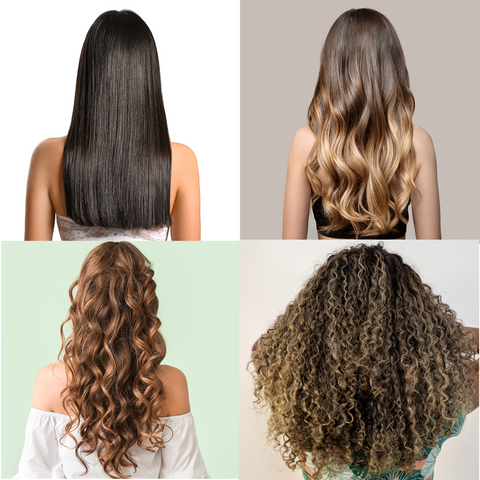
It is important to remember that most people do not have just one type of hair. They often have two different hair textures on various parts of their head.
Each of these hair textures will need special care and attention to enhance its natural best characteristics. Also, even though two people share the same natural wave, it does not mean they possess the same exact hair type. You are unique!
The terms "thick hair" and "thin hair " can be confusing. You can have dense fine hair — meaning lots of thin strands packed together — or coarse hair that’s sparse — fewer thick strands spread farther apart.
The texture of your hair is determined by the thickness or diameter of an individual hair strand. There are 3 basic categories:
To determine your hair texture, use a single strand of hair and compare it to the size of a piece of typical sewing thread.
Thin hair does not style very easily. Medium hair is relatively easy to style and can hold curls for a longer time period. Thicker strands are very easy to curl, but because they are less pliable, they can be difficult to style or hold their shape.
Texture is what determines how your hair feels between your fingers and how it responds to moisture and styling.
Hair density is the number of hair strands per square inch of your scalp.
Density affects how hair looks overall, how hair will react to certain products, and how well it will hold different hairstyles. People with low-density hair often do better with lightweight products, while high-density hair may need richer formulas to coat every strand.
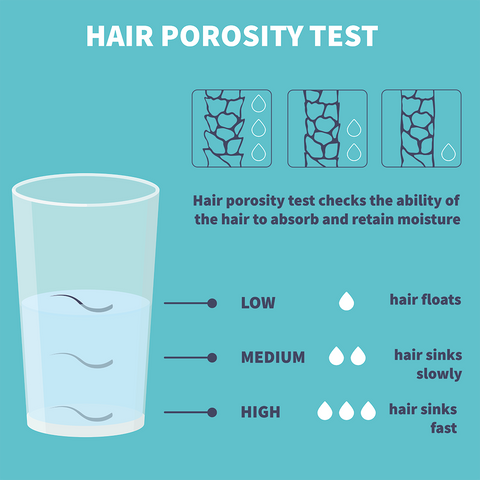
Porosity refers to your hair’s ability to absorb moisture as well as hair products. You can easily determine the porosity of your hair with a simple experiment.
It seems like hair with high porosity would be well hydrated all the time since it can easily absorb moisture easily. However, due to the gap areas around the cuticle, the hair also loses moisture very easily, which can result in hair that is dry, brittle, frizzy, and prone to breakage.
On the other hand, that flattened cuticles of hair with a low porosity actually blocks moisture from being absorbed into the strands. Since hair care products are not readily absorbed, product buildup on hair strands is often a problem. Hair care products should be applied sparingly while hair is still damp so product is more easily absorbed and distributed.
To keep your hair healthy and nourished, it is important to develop a haircare routine that includes proper hydration. Knowing your hair type is crucial, as it helps you choose the right products for straight, wavy, curly, or coily/kinky hair.
The wholesome goodness of our handcrafted soap is available for your hair.
Shampoo bars are an all natural conditioning shampoo in a solid bar form. Yes, this is real shampoo in a solid bar. Shampoo bars are not a new idea.
They were commonly used before liquid detergent shampoos and conditions were invented in the 1940s.
Although the process for making a shampoo bar is the same as making soap, our shampoo bar "recipes" are specially formulated with natural plant oils, butters, botanicals and essential oils that nourish your hair and scalp.
Our shampoo bars contain no artificial fragrance, color, preservatives, detergents, alcohol, urea, formaldehyde, sodium lauryl sulfate, DEA, propylene glycol - or any of the other synthetic hair care additives.
Each of our shampoo bar selections contains a different blend of natural plant oils, essential oils, and herb infused oils. No two recipes are the same.
Click here for help choosing an all natural shampoo bar!
Please read "Everything About Shampoo Bars!"

The most important consideration in any business is its customers. Today's world of misleading claims, false advertising, and simple deception, often leaves consumers trying to discover the truth about personal products and their ingredients.
Some of my favorite products are made with ingredients that just do not exist as certified organic. Why? At this time there are no standards created for ingredients specifically used in the personal care product industry. Organic certification of personal care products is based on the organic food standards set by the National Organic Program of the USDA.
But since we are a certified organic company, we are required to submit documentation that even our "non-organic ingredients" were produced without the use of toxic pesticides, genetically modified organisms (GMOs), sewage sludge, or irradiation.

Why Did We Become a Certified Organic Company?
What Do All of the Organic Labels Mean?







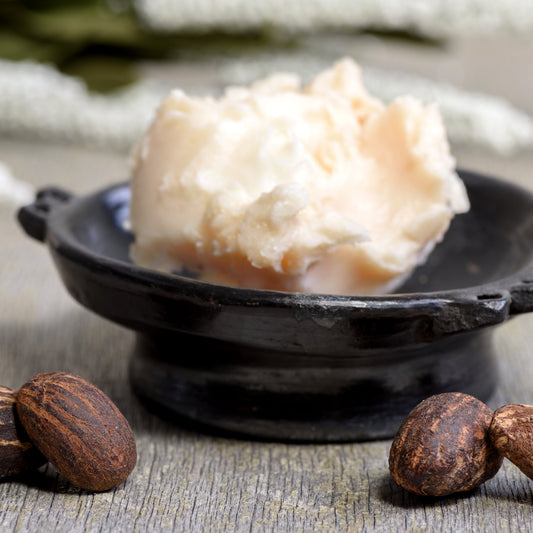
Shea Butter has been used across the African continent for centuries. But, all Shea Butter is not created equal! Let's Find Out Why.
Read Post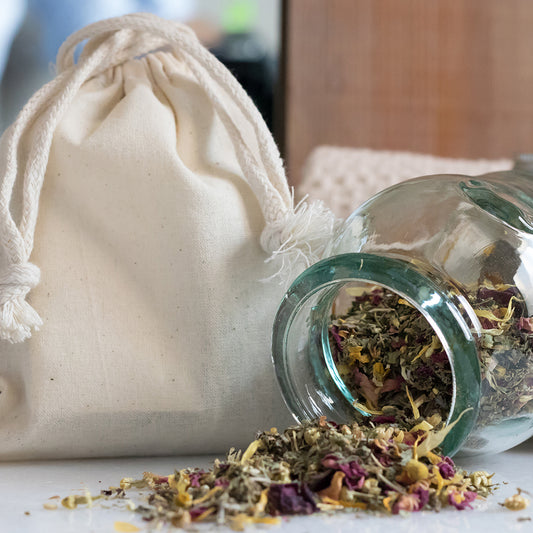
Herbal infusions have been used for centuries to naturally soften hair, enrich natural hair color, soothe irritation, prevent dandruff, stimulate the scalp, and restore luster, body, and bounce.
Read Post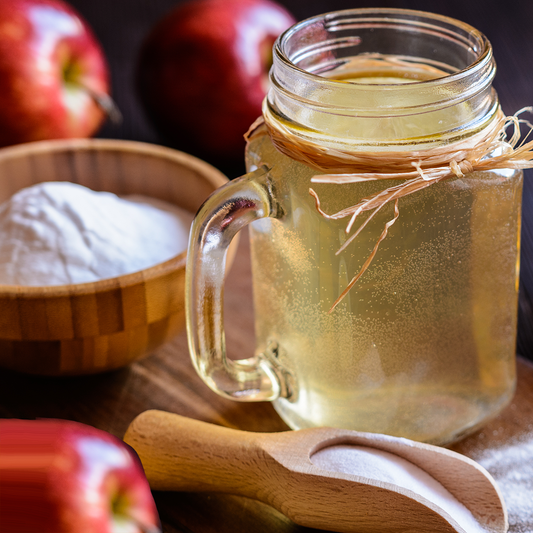
Try these Natural Remedies for hair and scalp build-up.
Read Post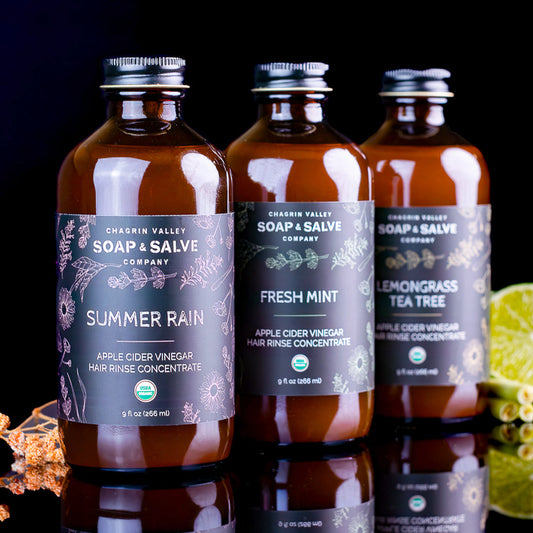
Apple Cider Vinegar is a great addition to any hair care regimen. Learn some tips, FAQs, and Recipes for using Chagrin Valley's Apple Cider Vinegar Rinses.
Read Post